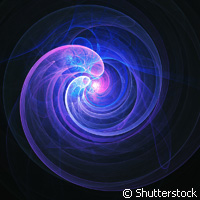Theoretical model spotlights noise impact on segmentation
Contrary to popular belief, it is not genes that control the development of periodic structures in embryos, but rather simple physical and chemical phenomena. This is the observation of a new study from France and Poland published in the journal Europhysics Letters. Researchers present a theoretical model that provides insight into the process of how segmentation is impacted by the system's internal and thermodynamic noise. The finding, say the researchers, is counter-intuitive in the context of what was initially perceived. Researchers from the Centre National de la Recherche Scientifique (CNRS) and the University Pierre et Marie Curie, in cooperation with the Institute of Physical Chemistry of the Polish Academy of Sciences (IPC PAS), say that in the initial stage of embryogenesis in vertebrates, periodic segments called somites are formed in their dorsal mesoderm. As time passes, they are transformed into vertebrae and spine elements. The model presented by the team shows how internal noise found within any physical system influences the formation of such patterns. 'We are convinced that the laws of physics and chemistry can explain biological phenomena and the evolution of living organisms,' says Dr Bogdan Nowakowski from IPC PAS. 'That's why we attempted to model theoretically one of the elements of vertebrate embryogenesis: the formation of periodic structures in somitogenesis. We did it by considering the minimal scheme of chemical reactions involving only a few components.' According to the researchers, the oscillating reactions of unbalanced phenomena result in aqueous solutions of proper reagents with a number of concentrations. When a component is added, a deviation in the system from the state of thermodynamic equilibrium occurs. Following this, chemical wavefronts begin propagating in the liquid. Because of their presence, a number of changes occur in the colour of solution. The researchers point out that if the reaction takes place in a thin solution, such as a Petri dish, colour rings will be permanently formed and propagated. The model proposed by the team is clear and succinct, they say. Overall, three chemical reactions and four substances are found within this model, whose parameters can be adjusted to trigger reactions that result in clear, spatial oscillations of concentrations of the solution components. The outcome are period patterns that are stable in time, what experts call 'Turing structures'. 'Our model is a purely theoretical concept, a signal indicating that a part of the phenomena occurring during somitogenesis [is] controlled by truly simple mechanisms,' says Dr Nowakowski, who along with his colleagues confirmed the effect of internal noise on the process reviewed. In nature, according to the team, noise is a consequence of the discrete, molecular structure of matter. It is an unavoidable, stochastic effect that emerges within every physical system. In a theoretical model, noise can be introduced or suppressed at will. This also means that the theorists can do what the experimentalists cannot; they can compare a naturally non-existing noiseless system with a noisy system and evaluate the effect of thermodynamic fluctuations on the segmentation process. 'Usually, one assumes that an accidental noise disturbs the existing order,' Dr Nowakowski notes. 'Our simulations gave an opposite result. After the noise has been introduced into the model, periodic patterns started to appear significantly faster, just after the chemical wavefront has passed.'For more information, please visit:Centre National de la Recherche Scientifique (CNRS):http://www.cnrs.fr/Institute of Physical Chemistry of the Polish Academy of Sciences:http://www.ichf.edu.pl/indexen.htmlEurophysics Letters:http://epljournal.edpsciences.org/
Countries
France, Poland



